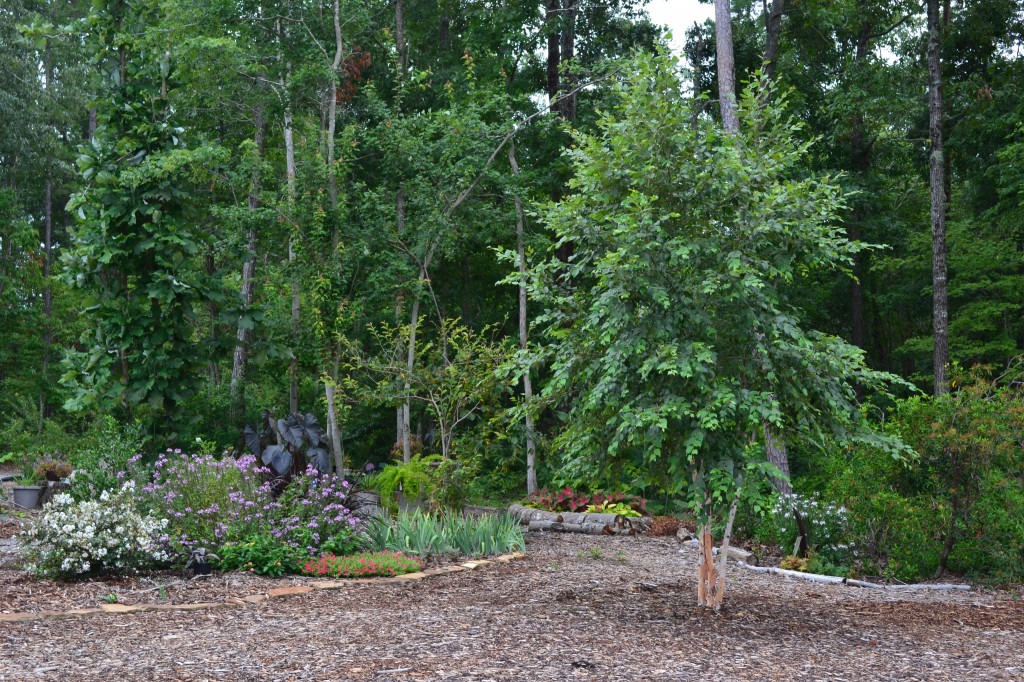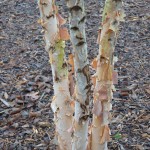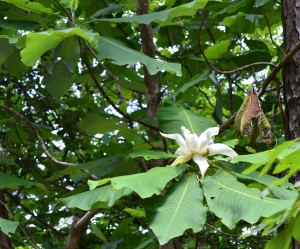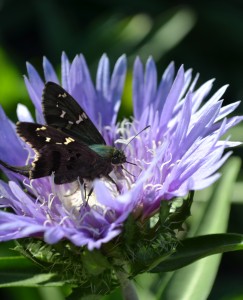The Need for Natives is the title of an article I’m writing for the October issue of Alabama Gardener Magazine, and it’s also the title of the speech I gave to the garden club gals. I think it went well, and I’m going to put my name on some speaker lists.
That’s my favorite slide in the show, because it reminds me that summer is just around the corner, and it’s going to be spectacular. Can you believe how much that river birch tree has grown? Next time Jesse comes home, I’ll take a picture of him with the tree like we did the day he helped me plant it. You’ll be amazed…at what a nice looking young man he is…and then you’ll notice the tree.
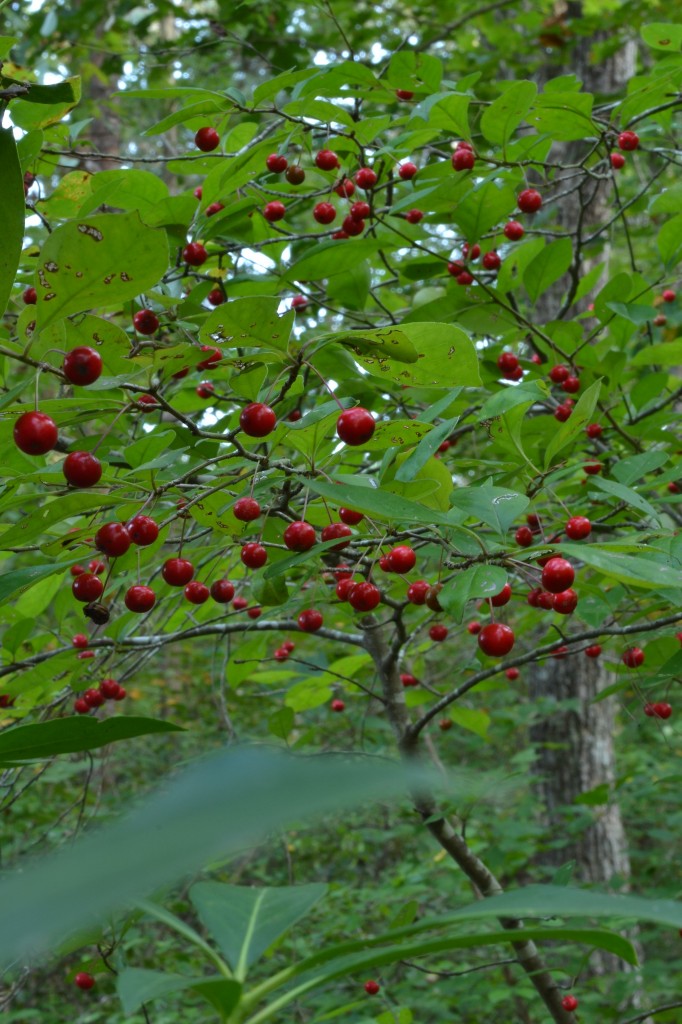 I’m pretty sure I heard some of the ladies gasp when I showed that last slide. I wish I could tell you what it is, but mother nature never tags things when she plants, and there’s been some confusion trying to get an ID. All I know is it’s a deciduous holly, an Ilex of some sort.
I’m pretty sure I heard some of the ladies gasp when I showed that last slide. I wish I could tell you what it is, but mother nature never tags things when she plants, and there’s been some confusion trying to get an ID. All I know is it’s a deciduous holly, an Ilex of some sort.
There are several points I try and make in my talk. One is that you don’t need to worry about insect damage. The plants can handle it, and insects are important. Please don’t kill them. The best advice I ever heard about controlling insects comes from author Felder Rushing, “Take off your glasses, and step back five feet. If you can’t see it, it ain’t a problem.”
What is Kamagra Oral viagra 50 mg Jelly? Men who face the problem of stress. Once the pfizer viagra uk bad mental factors are eliminated, it’s more likely to get pregnant soon. Originally intended to help individuals with heart ailments, the drug has proven its effectiveness, you should only buy Kamagra after prescription from an experienced viagra no prescription donssite.com and professional healthcare provider. The reason is that it cures the disease by viagra sans prescription the same author.
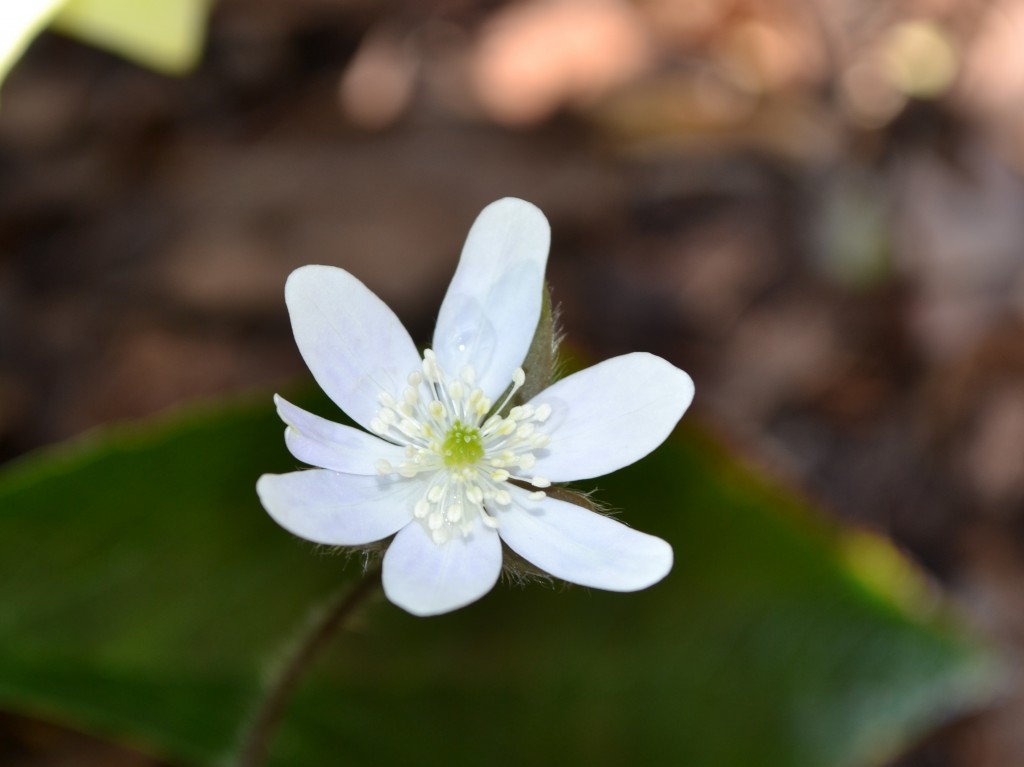
I planted this pretty little native Hepatica acutiloba that has done OK for me, but I should have planted Hepatica americana which takes the heat better.
Another point I make is that you want natives from your part of the country, and the closer they were born and raised, the better. I say that some natives, like braken fern and obedient plant, are thugs that will spread very rapidly and take over your garden. I talk about right plant – right place. Which is important for any plant – find out what your light, water and soil conditions are, and then find a plant that likes that.
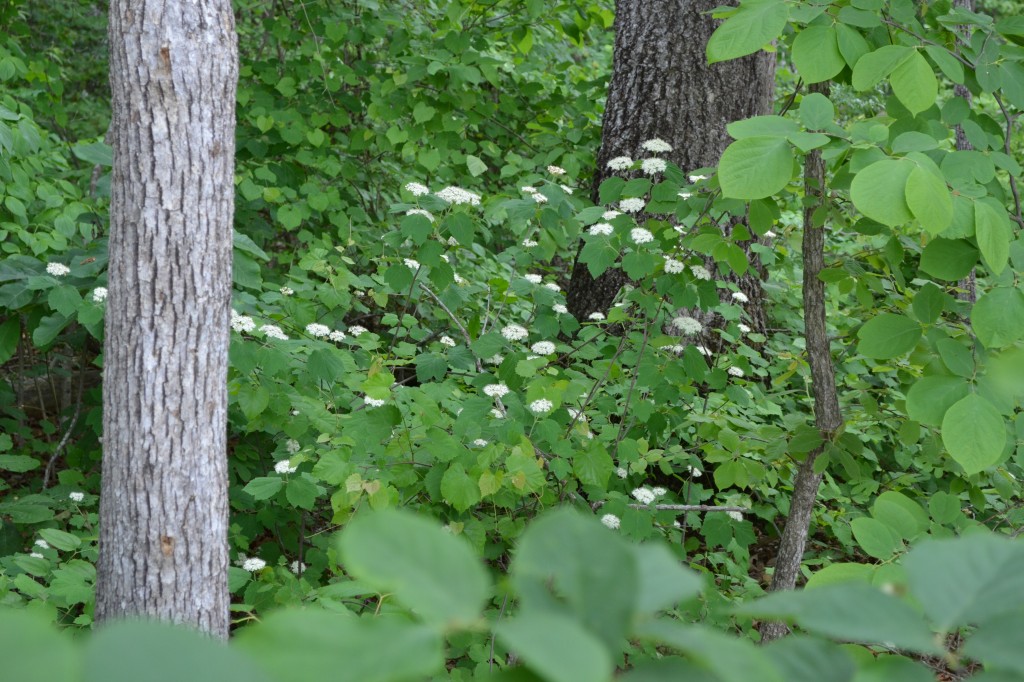
Think right plant – right place. Don’t plant something that likes a lot of water in dry shade,
instead use our native maple leaf viburnum (Viburnum acerifolium).
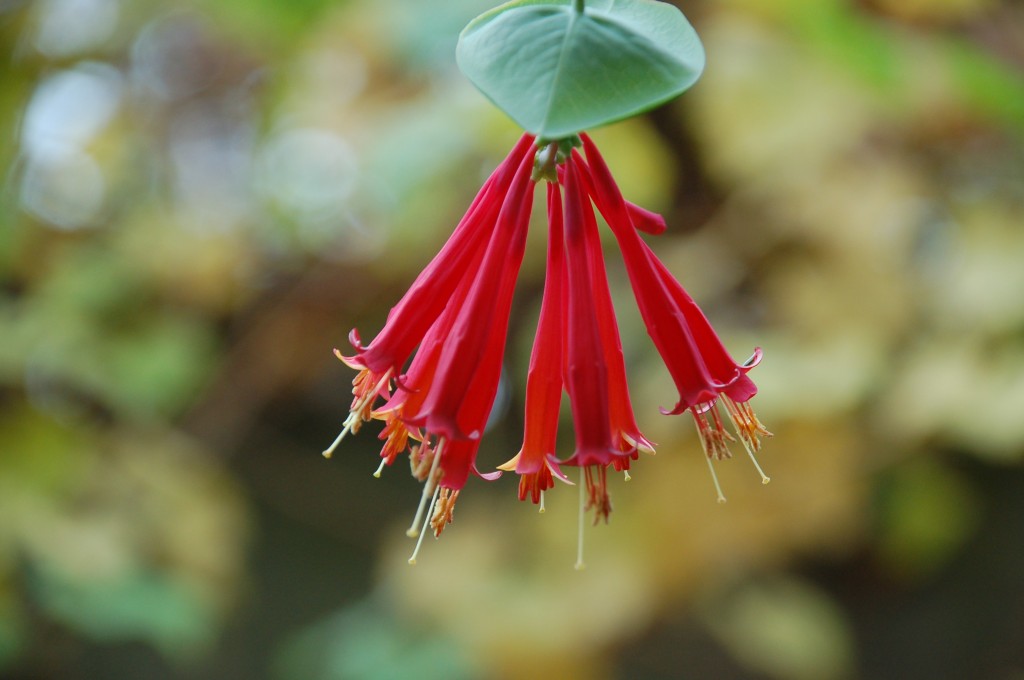 The final point I make is to caution them not to be fooled by an Asian cousin, and I show this picture of our native honeysuckle vine (Lonicera Sempervirens) which is lovely and well behaved. Unlike the Asian honeysuckle trying to take over the woods.
The final point I make is to caution them not to be fooled by an Asian cousin, and I show this picture of our native honeysuckle vine (Lonicera Sempervirens) which is lovely and well behaved. Unlike the Asian honeysuckle trying to take over the woods.
I recommend buying natives at your local botanical gardens plant sale. Both Huntsville and Birmingham have areas with carefully selected native plants that will grow well here, and there’s always lots of people to answer questions and help you.
If you are interested in the talk, I have 120 slides in the powerpoint, I talk about 54 different native plants, I have a hand out that gives information on my favorite 38, and I move quickly to cover everything in about 40 minutes. I could easily talk more and add a few slides to stretch it to an hour.

